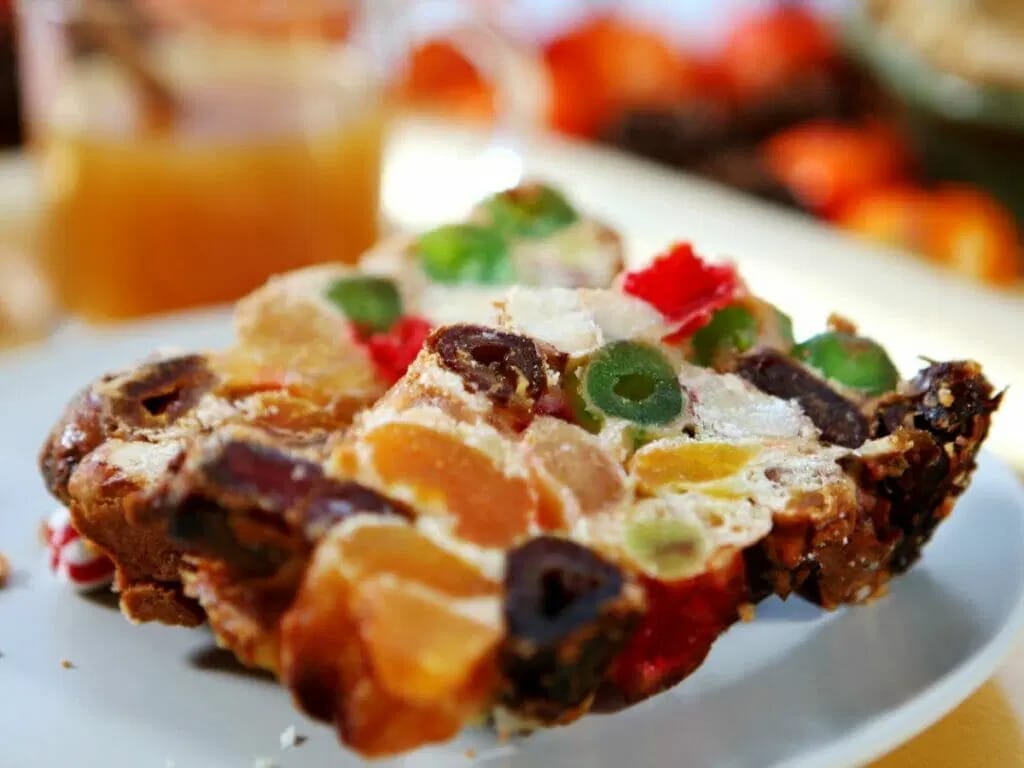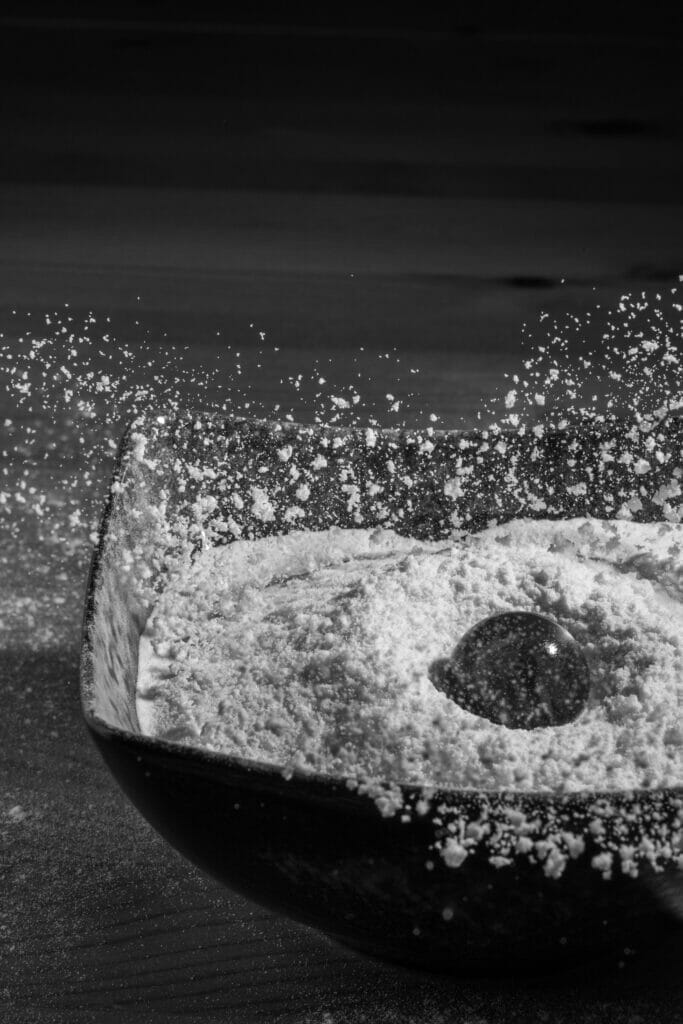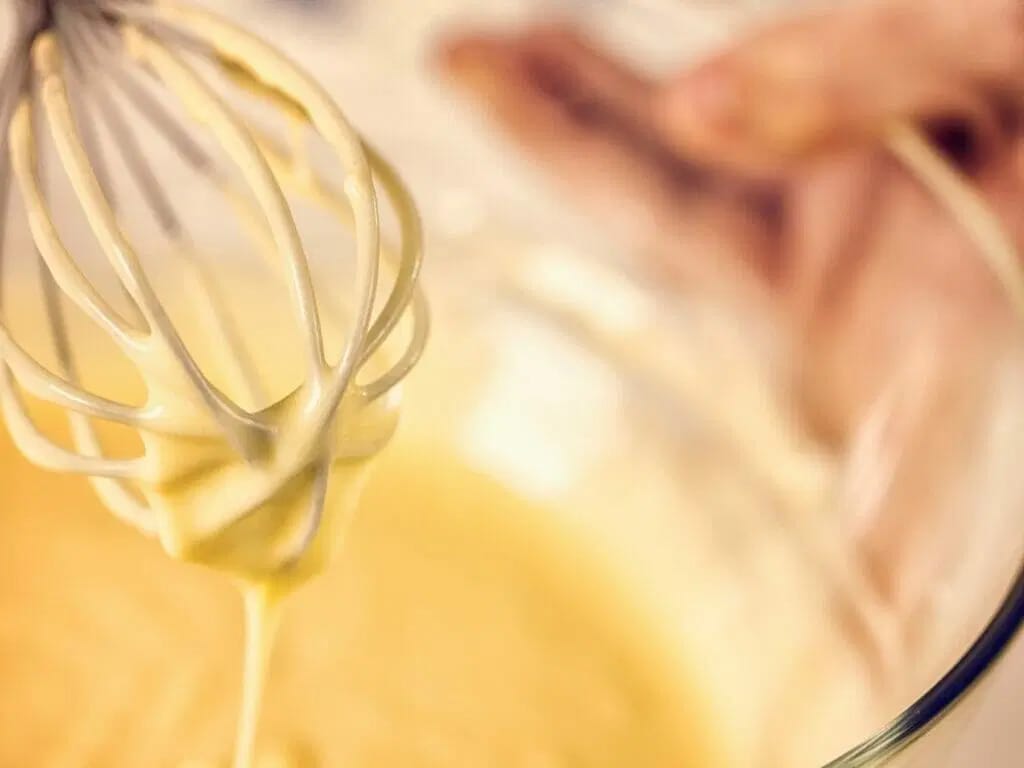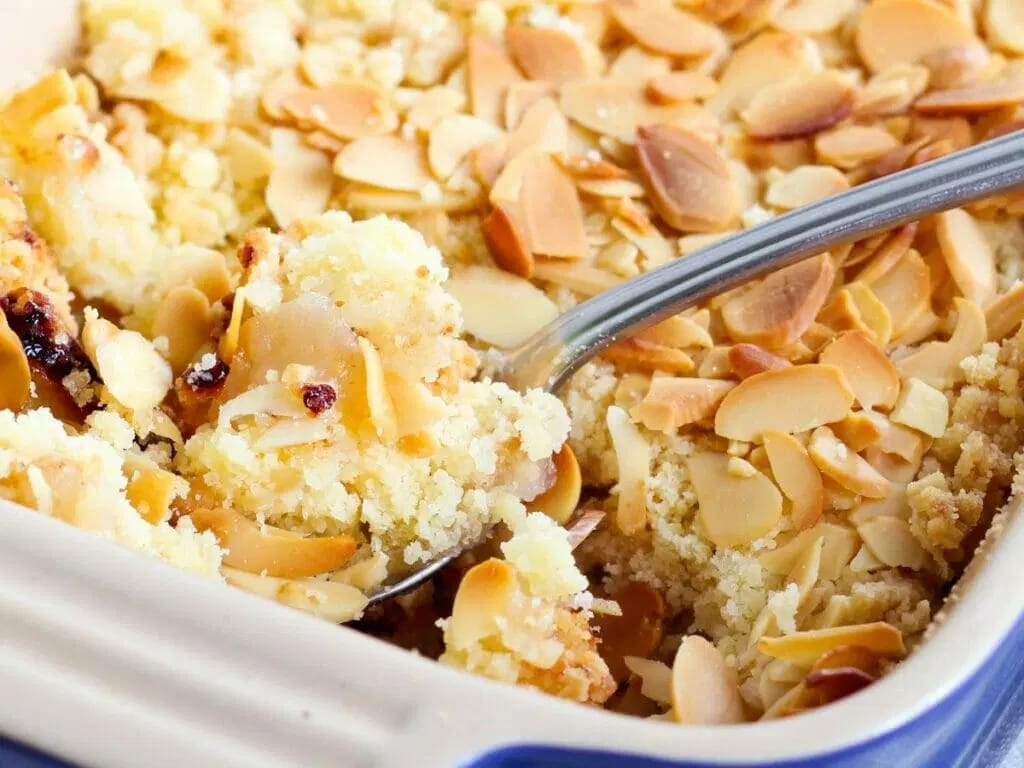As an Amazon Associate, I earn from qualifying purchases. In addition, I participate in several other affiliate programs that allow me to earn while I recommend products I love.
Unless you’re an expert baker, you’ll likely have experienced some frustratingly common cake baking problems before.
From dry and crumbly to stodgy and dense cakes, here are 11 common cake baking problems and how to fix them!
Once you’ve mastered the art of cake baking, shop our essential cake baking tools to help elevate your baking experience.
1. Your cake is too dense

You’ll know when your cake is too dense when it feels heavy and a little stodgy.
There can be several reasons why your cake was too dense, such as using the wrong type of flour or adding too much sugar.
However the most common reason why your cake was too dense was because the batter didn’t have enough air.
When mixing your batter, you want to make sure you’ve mixed just enough and never too much.
Mixing your batter too much can cause the air bubbles to pop, resulting in a dense cake that doesn’t rise properly.
How much time you’ll need to mix your batter will depend on the recipe you’re using, but a general rule of thumb is to mix only until the lumps are gone.
2. Your cake didn’t rise

If you’re wondering how to fix common cake baking problems, there’s a high chance the culprit is one of the ingredients.
If you’re commonly experiencing problems with your baked goods not rising, the problem might be with your baking powder.
Because baking powder doesn’t generally change in appearance even over lengthy periods of time, it can be hard to know when it has expired by simply looking at it.
To test the freshness and efficacy of your baking powder, drop a teaspoon into a glass of hot water.
If the water bubbles immediately, your powder is still working fine.
If not, you may have found the source of your cake baking problems.
3. Your cake overflows
If you’ve looked at a cake in the oven that is threatening to overflow out of the pan and thought ‘my cake has gone wrong’, you’re not alone.
An overflowing cake is a common problem that typically occurs when the pan has been overfilled.
When combined with the heat of the oven, the batter is likely to flow out of the pan.
Luckily there’s an easy solution to this common problem.
Simply remember to only fill your pan between halfway to two-thirds full.
This should leave enough room for your cake to rise without overflowing.
4. Your cake has sunken

A common cake baking frustration is a sunken or fallen cake.
A sunken cake can occur as a result of various problems, such as underbaking, over-baking or not letting your cake at a steady temperature.
For the former types of baking problems, ensure you check the recipe and bake your cake for precisely the necessary amount of time.
For fixing cake baking problems that occur as a result of the latter, keep your oven door closed and keep an eye on your batter through the glass.
If you keep opening the door whilst the heat is still rising, you’ll let the hot air out which can result in your cake rising and sinking suddenly.
5. Your cake has stuck to the pan
A common baking problem is a cake that has stuck to the bottom of the pan.
This can occur if your batter is not made correctly or doesn’t have the right consistency.
It can also happen if your pan was not adequately greased, resulting in your cake getting stuck to the metal.
A solution to this common problem is to use shortening as a greasing tool.
Cooking spray may not be as strong in preventing your batter from sticking to the pan, but shortening spray should do the trick.
6. Your cake has crusty edges
If your cake has developed crusty edges that leave your cake with a slightly burnt taste, you may be putting too much cooking spray or oil on the sides of your pan.
If you commonly experience burnt edges, keep a watchful eye on how evenly your pan is sprayed with cooking oil before you pour the batter in.
A light and even layer of non-stick grease is key to knowing how to fix cake baking problems that involve crusty edges.
7. Your cake batter is too stiff

You’ll know your cake batter is too stiff when it becomes heavy to mix and forms a tough texture.
A stiff cake won’t rise properly, meaning your cake will likely end up dense and unpalatable.
Cake batter often becomes too thick when there is excess gluten in the recipe, typically caused by over mixing.
Avoid adding excess gluten to your batter by restraining yourself from mixing more than necessary.
Scrape down the sides of your bowl and mix only until the lumps have dissolved to avoid developing a stiff cake batter that will struggle to rise.
8. Your toppings sink to the bottom

If you’re making a fruit cake or a cake with other heavy toppings, such as nuts, you may find that these fall to the bottom of your cake, resulting in a dense cake that doesn’t rise with the desired proportions.
A solution to this is to ensure you’re baking the right type of cake that can withhold your preferred toppings.
If you do wish to use fruit, slice them up into thin pieces or choose to bake a denser style cake such as a carrot or banana cake.
9. The side of your cake sink inwards
A cake that sinks inwards can be a sign of an incorrect recipe, most likely one with too much liquid or grease.
If your batter has too much liquid, such as oil, milk, vinegar or water, the cake may be overly moist, causing the sides of your cake to buckle inwards.
The trick to avoiding a cake that sinks inwards is making sure you’ve only added the necessary amount of liquid to your batter.
10. Your cake has cracked

A cracked cake is a common cake baking problem, and often caused by an oven that is too hot, causing your cake to crack on the surface before it has baked all the way through.
The solution is to use an oven thermometer that will help you ensure your oven is at the optimum temperature for your cake to bake at a steady temperature.
11. Your cake has crumbled when cutting

Your cake may crumble when slicing because of any number of reasons, most likely a dry batter or too much heat in your oven.
If your cake has crumbled but is otherwise cooked all the way through, simply dollop a generous serving of frosting over the top or mold it into mini cake balls, and no one will be any the wiser!
